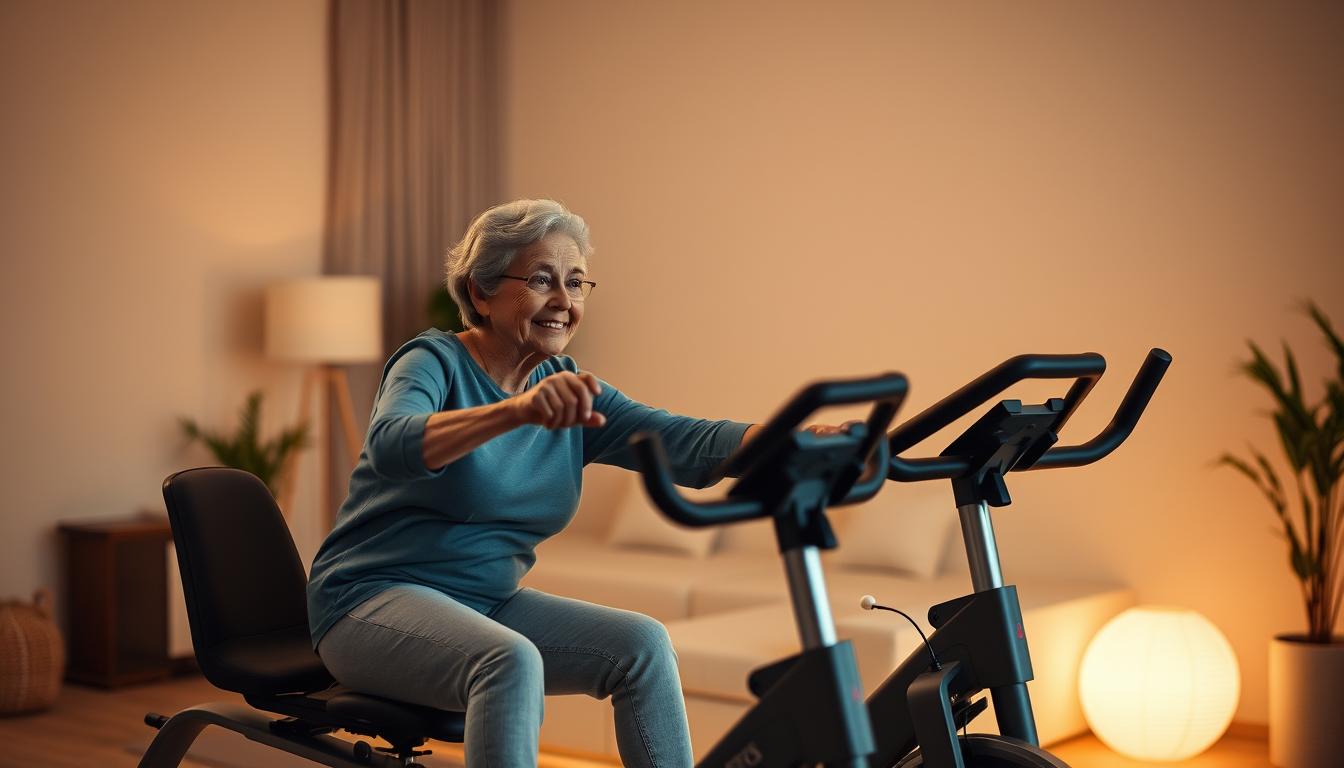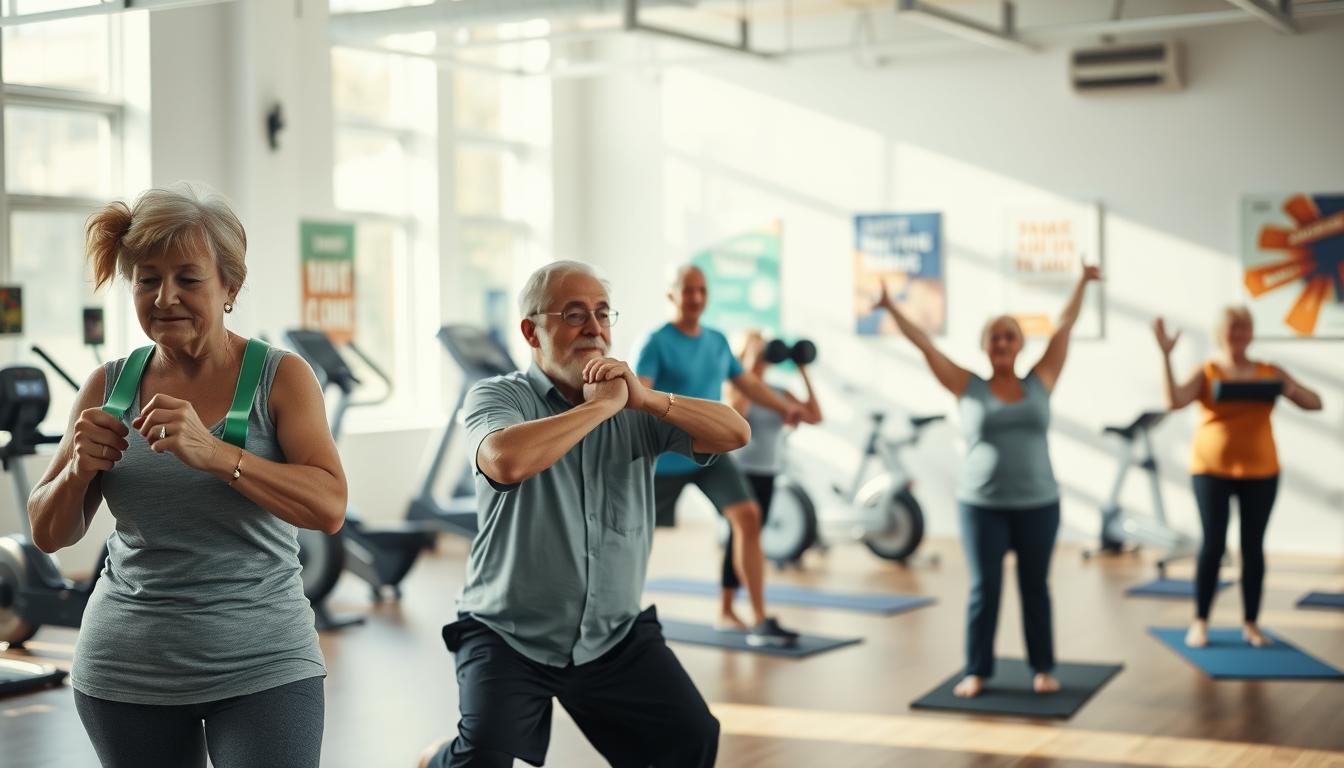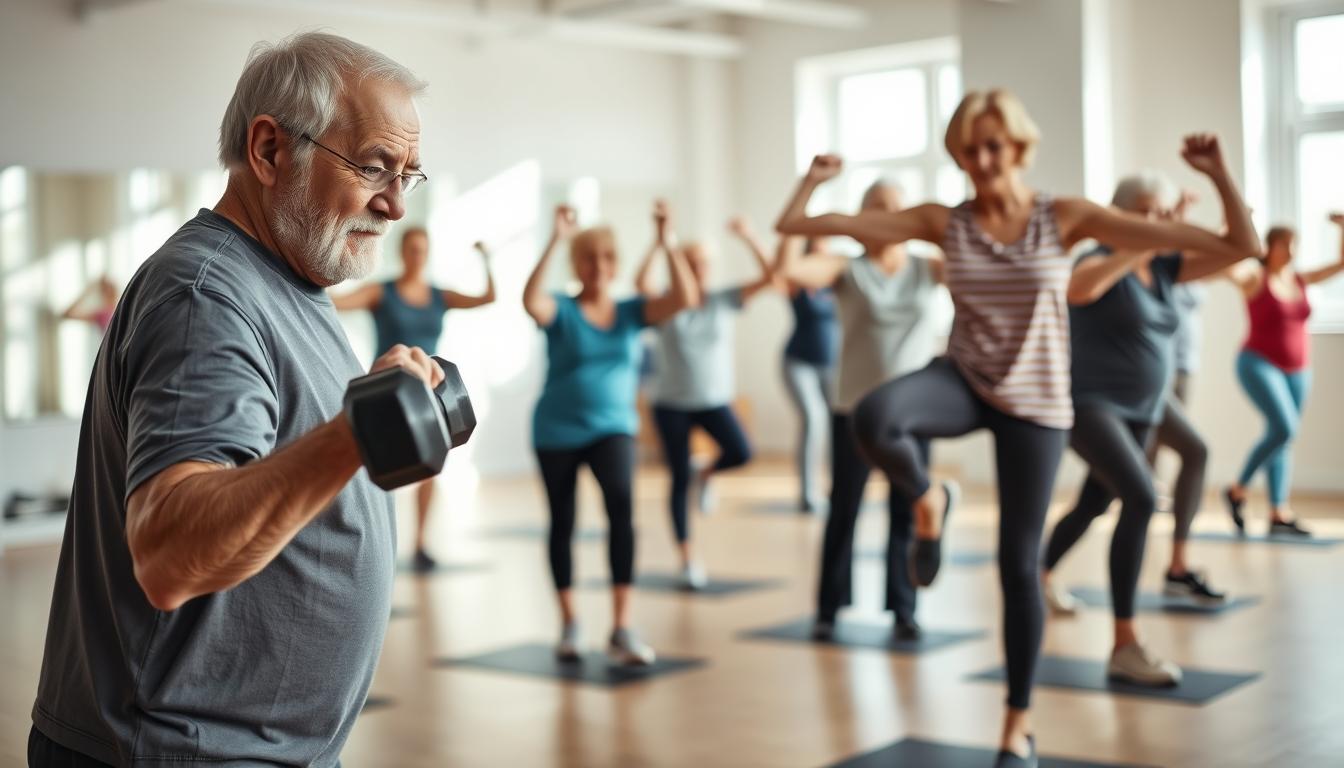Let’s cut to the chase: gentle cardio doesn’t have to feel like a chore or leave you hobbling to the ice pack. The secret? A recumbent bike—the lazy boy recliner of fitness gear—that cradles your spine while firing up your heart rate. I’ve seen folks in their 70s crush 20-minute sessions from Fitkit’s playbook, grinning like they just found a forgotten $20 in their pocket.
Here’s the kicker: pedaling in that laid-back position isn’t just comfy—it’s sneaky-effective. One client told me her morning rides feel “like catching up with an old friend who doesn’t judge your sweatpants.” And no kidding—Technogym’s latest models even have lumbar support that’ll make your sofa jealous. You’re not just burning calories; you’re giving your joints a vacation from pavement-pounding punishment.
Think you need marathon workouts? Hard pass. Start with intervals: 3 minutes steady, 1 minute faster (pretend you’re chasing grandkids for the TV remote). Repeat. Boom—you’ve hacked your metabolism without wrecking your knees. Best part? You’ll finish fresh enough to tackle actual grandkids or that crossword that’s been mocking you all week.
Understanding the Benefits of Recumbent Bikes for Seniors
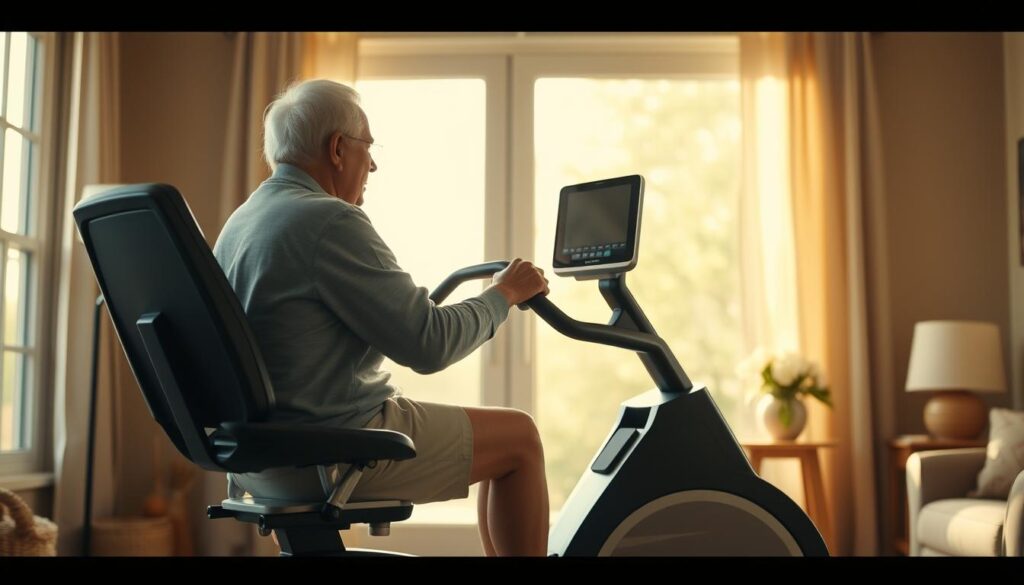
Ever wonder why some workouts feel like a warm hug instead of a wrestling match? That’s the magic of these laid-back pedaling machines. Their secret sauce? A design that cuts joint stress by up to 40% compared to upright models—something fitness guru David Jack swears by for his silver-haired clients.
Your Spine’s Favorite Workout Partner
Picture this: you’re coasting through your morning routine while your lower back lounges like it’s on vacation. The reclined position keeps your hips and knees in a “goldilocks zone”—not too bent, not too straight. Perfect for anyone who’s ever winced getting out of a car seat.
No Wobble Zone
Technogym’s latest models come with wraparound lumbar support that feels like a trusted spotter. One regular at my gym calls it “the security blanket of exercise equipment”—you can focus on building stamina without white-knuckling the handles.
Start with resistance level 3—enough to feel the burn without fireworks. Ramp up gradually, and suddenly you’re cruising through 20-minute sessions that leave you energized, not exhausted. That’s the beauty of low-impact workouts: they sneak up on you like a stealthy calorie ninja.
How to Adjust Your Bike for Maximum Comfort
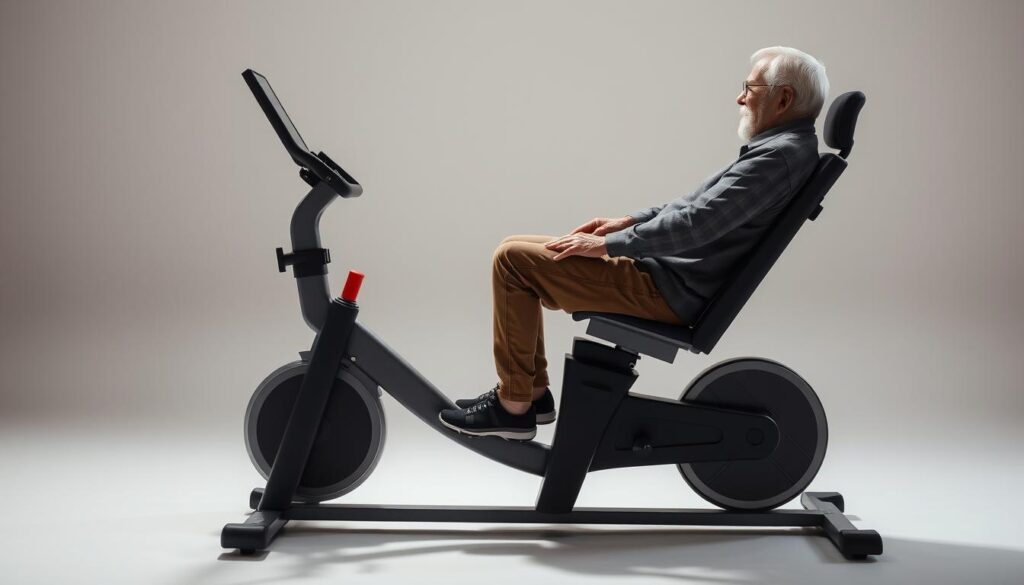
Let’s get your setup feeling like your favorite armchair—cozy but ready for action. Proper adjustments turn casual pedaling into a body-friendly exercise that builds strength without strain. Trust me, the difference between “meh” and “ahhh” comes down to two tweaks.
Foot Placement: Your Foundation Matters
Slide your feet into the pedals like you’re slipping into well-worn slippers. Secure the straps snugly—not tight enough to cut circulation, but firm enough to keep heels from lifting. Pro tip: Position the ball of your foot over the pedal spindle. This alignment distributes effort evenly, turning each push into a strength-building exercise for calves and quads.
Seat Science: Finding Your Sweet Spot
Adjust the seat until your front knee forms a 25-degree bend when the pedal’s farthest away. Too straight? You’ll strain hips. Too bent? Hello, knee crunch. Start at resistance level 3—enough to feel the burn without drama. Spend 2-3 minutes testing this setup before ramping up intensity. One client joked, “If my kneecap isn’t winking slightly, I know I’m off.”
Remember: Your machine should adapt to your body, not the other way around. Nail these adjustments, and you’ll turn pedaling into a rhythm that fuels both heart and joints.
Recumbent Stationary Bike Exercises for Seniors
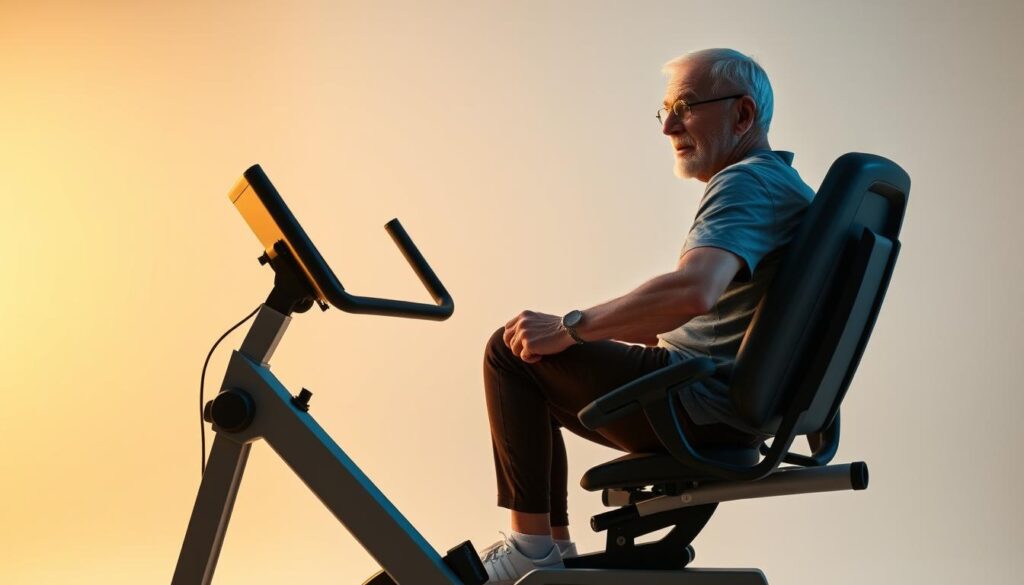
Ready to turn pedaling into a heart-pumping adventure? The magic happens when you blend steady effort with playful bursts. Let’s break down a 20-minute Fitkit-approved session that’s easier than memorizing grandkids’ TikTok dances.
Cardio Routines That Engage Your Heart
Start with a 3-minute warm-up at resistance 2—imagine you’re strolling through a Sunday farmers’ market. Then shift gears:
- Minutes 3-6: Steady pace (resistance 4), shoulders relaxed like you’re balancing invisible teacups
- Minutes 6-9: Boost speed 25%—pretend you’re racing to snag the last parking spot at bingo night
- Minutes 9-12: Crank resistance to 6 while maintaining rhythm, engaging those hidden back muscles you forgot existed
Interval Training and Resistance Variations
Now the fun part: alternating 1-minute sprints with 2-minute recovery periods. Think of it as a dance between effort and ease:
- Push hard enough to sing only every third word of “Sweet Caroline”
- Drop resistance to 3 during recovery—let your legs coast like they’re on a beach cruiser
Adjust your seat position slightly forward during high-resistance phases. This tweak fires up quadriceps while protecting your lower back. One client calls these sessions “a mini workout carnival”—challenging yet oddly refreshing.
Guided Tutorial Steps for Safe Workout Execution
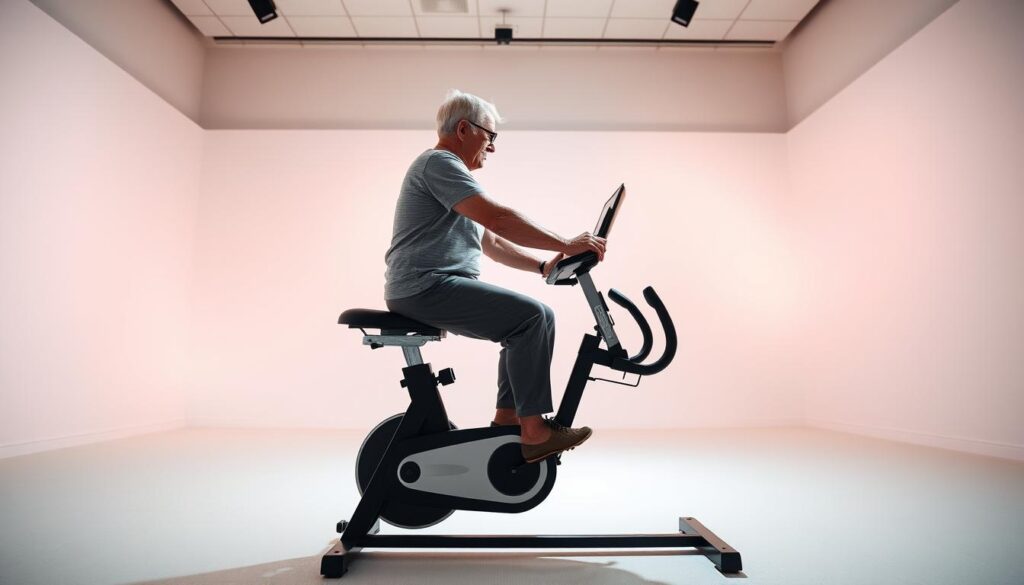
Think of your body like a vintage Mustang—it needs a proper warm-up before hitting the open road. Here’s how to rev your engine without redlining your joints. Trust me: this step-by-step approach keeps health and flexibility front and center while dodging the “ouch” moments.
Warm-Up Protocols and Gradual Intensity Ramps
Start with 5 minutes at speed 3—imagine you’re strolling through a grocery store parking lot. Key move: Pedal backward for 30 seconds halfway through. This wakes up those sleepy hamstrings like flicking the lights on in a dark room.
Now, let’s shift gears without shocking your system:
- Minutes 5-8: Bump resistance to 4. You should feel like you’re pedaling through wet sand—enough effort to notice, not enough to curse.
- Minutes 8-11: Increase speed 20% (think “power-walking to catch a departing bus”). Keep shoulders loose—no turtle-necking!
- Minutes 11-15: Alternate 45-second pushes at resistance 6 with 90-second recovery at 3. Pretend you’re climbing gentle hills on a coastal highway.
Cool down for 5 minutes, lowering resistance by 1 notch each minute. One regular at my gym calls this phase “the golden ticket to next-day mobility.” Listen to your knees—if they start whispering complaints, dial it back. Your health journey isn’t a race; it’s a scenic drive with pit stops for flexibility.
Integrating Resistance and Flexibility into Your Routine
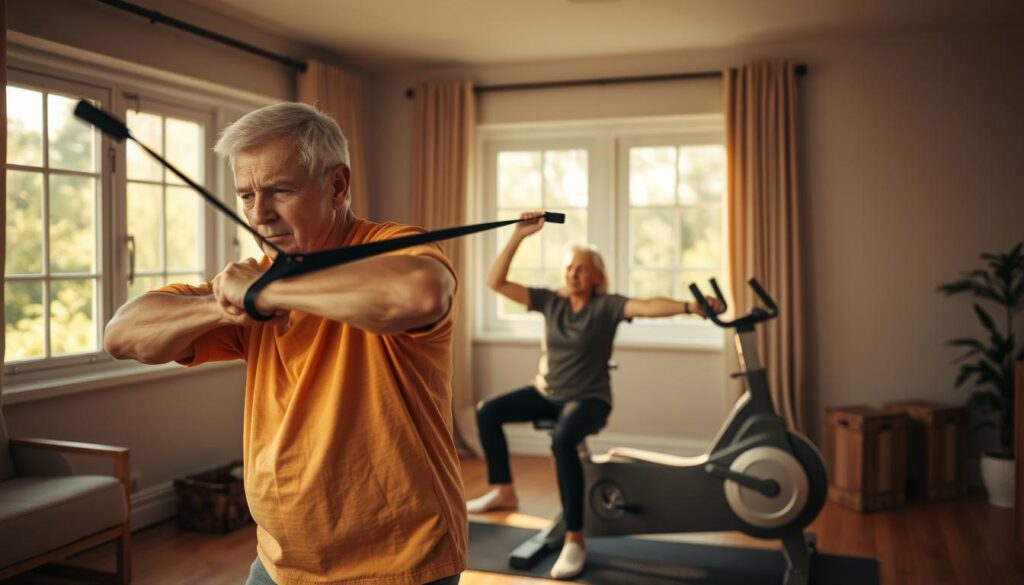
What if your workout could double as a balancing act and strength builder? Let’s blend the steady push of resistance with the graceful flow of stretches—like mixing espresso into oatmeal for a kick that lasts. I’ve seen clients transform their routines by pairing smart machine options with moves borrowed from tai chi masters.
Resistance Adjustments to Activate Leg Muscles
Think of your bike’s resistance settings like pool noodles in water aerobics—they create pushback without pounding your joints. Start at level 4: enough to feel your thighs engage, but gentle enough to protect those precious knees. Crank it up 1 notch every 3 minutes—your legs should hum like a contented beehive, not scream like a teakettle.
| Resistance Level | Muscles Targeted | Pro Tip |
|---|---|---|
| 3-4 | Calves, Shins | Pretend you’re pedaling through warm honey |
| 5-6 | Quads, Hamstrings | Keep heels planted to avoid knee strain |
| 7-8 | Glutes, Core | Lean back slightly to fire up hidden muscles |
Flexibility Moves for Improved Balance and Control
After your ride, try these tai chi-inspired stretches:
- Tree Pose Twist: Hold the seat for support, lift one knee to hip height. Rotate torso slowly—like reaching for cookies on a high shelf
- Pedaler’s Reach: Sit tall, interlace fingers overhead. Lean side-to-side—imagine you’re a metronome keeping time
Hold each stretch for three breaths. One regular quips, “It’s like giving my joints a bedtime story.” These moves build endurance where it counts—helping you stand firm when life tries to knock you off-balance.
Common Pitfalls and How to Sidestep Them
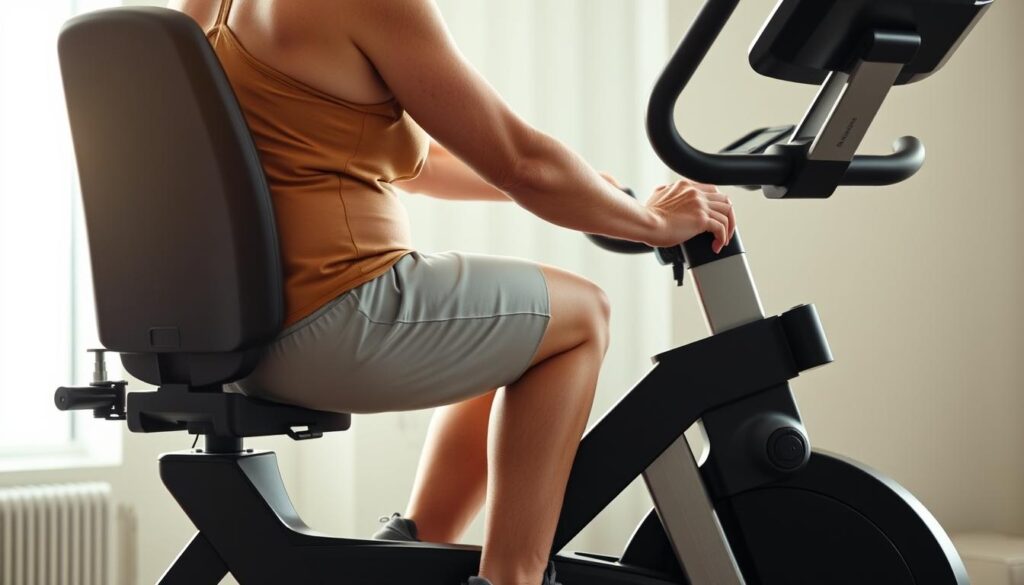
Even smooth rides hit potholes—here’s how to steer clear. I’ve watched countless gym warriors and home riders accidentally sabotage their benefits by overlooking simple fixes. Let’s tackle these speed bumps head-on so you can cruise toward results without detours.
Your Knees Will Thank You Later
Overloading resistance feels heroic… until your joints stage a protest. One client learned this the hard way—cranking to level 8 left her calves tighter than guitar strings. Dial it back if your pedaling rhythm resembles a jackhammer. Golden rule: If you can’t hum “Happy Birthday” comfortably, you’re in the danger zone for injuries.
Watch your foot placement like a hawk. Straps loose? Hello, shin splints. Ball of foot sliding forward? Cue knee crunch. Adjust pedals until your legs move like pistons in well-oiled machinery.
The “Sweet Spot” Sweat Test
Gym regulars swear by the “talk test”—if you can’t gasp out three-word phrases, ease up. Your machine’s display? Treat it like a suggestive friend, not a drill sergeant. Try this intensity checklist:
- Breathing: Steady inhales through nose, not panting like a puppy
- Posture: Shoulders relaxed, grip light enough to hold a ripe tomato
- Recovery: Heart rate drops to warm-up level within 90 seconds post-session
Remember: Benefits multiply when you balance challenge with kindness to your joints. As my yoga-teacher neighbor says, “Strain is for laundry—not workouts.”
Wrapping Up Your Recumbent Bike Routine for Sustainable Fitness That Continues to
Cooling down isn’t just slowing down—it’s your body’s victory lap. I recommend treating those final minutes like a reverse countdown: dial resistance back by 1 level every 60 seconds until you’re coasting smoother than jazz saxophone. This gradual shift helps minimize impact on creaky joints while letting your heart rate settle gently.
When easing off the pedals, think of it as stepping off an escalator—no sudden stops. Keep feet moving slowly for 30 seconds post-ride to avoid stiffness, especially if arthritis likes to gatecrash your progress. At home? Try rocking heel-to-toe motions while gripping the seat—it’s like giving your ankles a standing ovation.
Take your time here. Sip water, towel off, or jot down how your knees felt today. Gym-goers might stretch near their machine; home riders could walk laps around the kitchen island. Both options keep the “finish line feeling” alive without aggravating arthritis or your back.
Next time you clip in, remember: sustainable fitness isn’t about heroic efforts—it’s the art of showing up, tuning in, and honoring your body’s whispers. Your pedals will wait. Your home setup stays ready. And your joints? They’ll thank you for turning routine into ritual.
